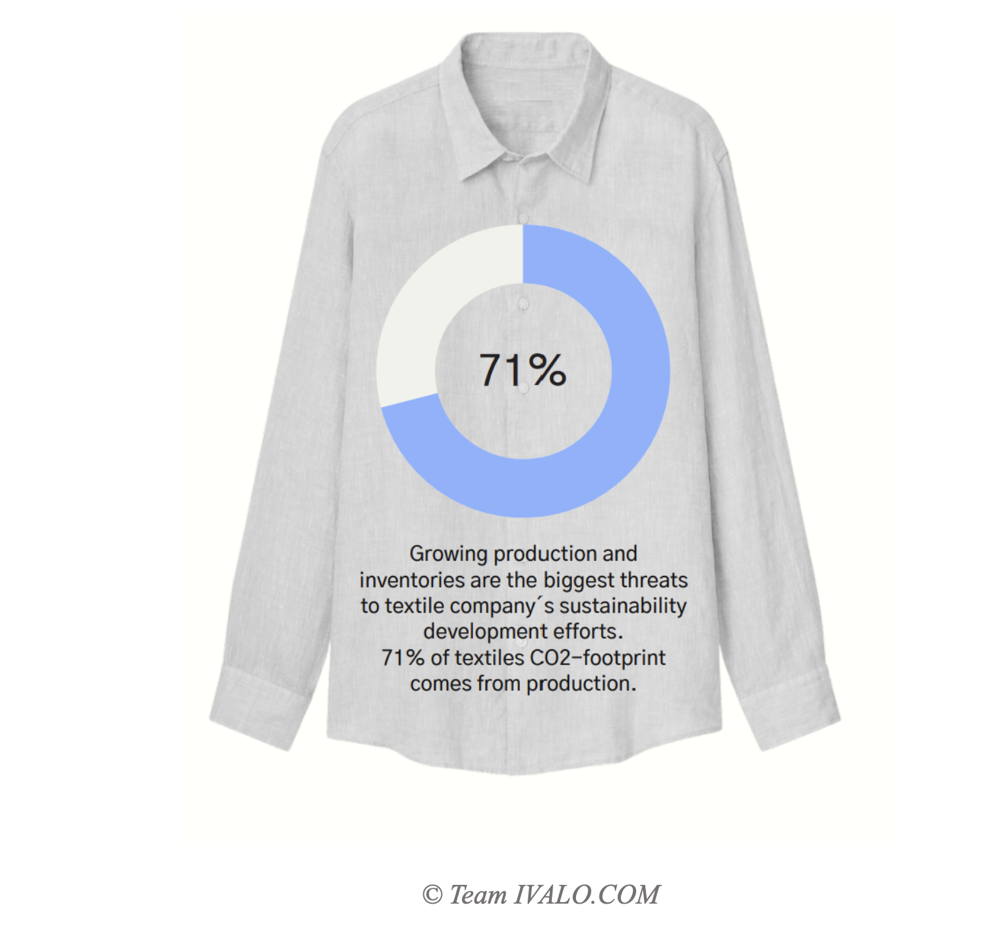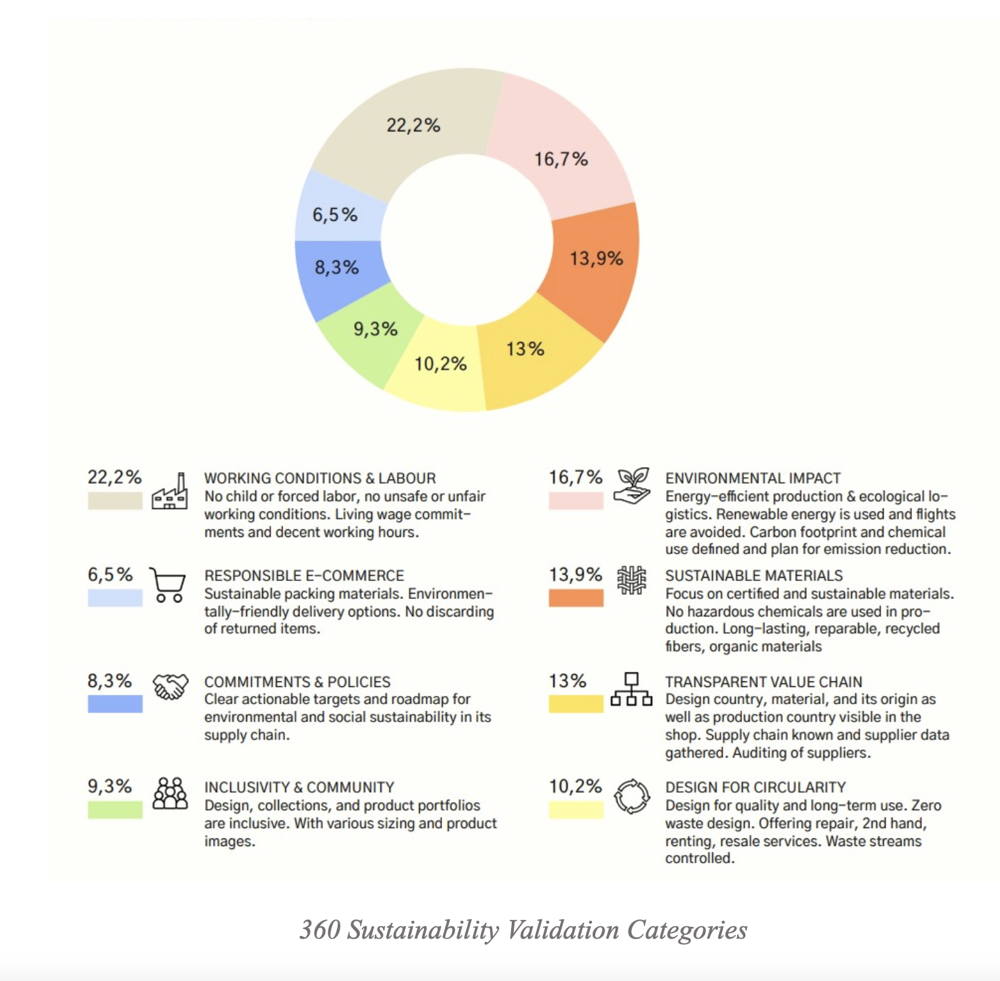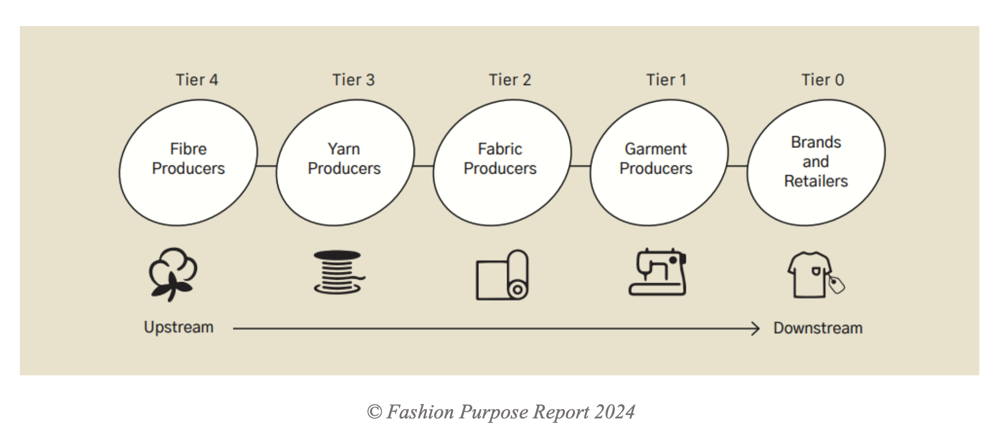
Fashion Purpose Report | The Driving Forces Behind Sustainable Brands
Fashion Purpose Report offers data-driven insights, helpful recommendations, and meaningful marketing collected in order to support purpose-driven brands on their way. Here is our summary.
The fashion marketplace Ivalo.com and Studio M004 launched during Seek Exhibitions the first Fashion Purpose Report to help brands getting success in business in a sustainable way. For the fashion industry, to be “data-driven” means to have actuals not estimates. Ivalo.com believes that openness and sharing knowledge is the key to help develop businesses. Without factual data, companies lack perspective and direction in strategic decision-making.
At the moment, sustainability data is mainly handcrafted and difficult to understand. According to a survey from Forbes, only 2% of sustainability software vendors prepared actual data. The rest used industry averages or unverified inputs, what led to the situation when so many companies have no idea of the CO2 footprint they are leaving. The human factor also plays a role. Selling cheap, fast and unsustainable product is lazy and easy. We need courage to be sustainable because it is much harder to be good.
CHANGING THE NARRATIVE ON FASHION AND LIFESTYLE CONSUMPTION
There is a high probability that you have heard the urge to “consume less”, which is peculiar because the biggest environmental impact is, in fact, not in product use (20%), or the logistics (3%), but in manufacturing (71%).
Therefore, the main emphasis on reducing the fashion and textile industry’s emissions should be in producing a finer quality, less quantity, and smarter.

The sustainability criteria and questions look at commitments, materials, production facilities, wages, working conditions and many others including cultural aspects like diversity and inclusion. This data has been collected from 110-131 brands that are currently active on IVALO.COM marketplace.
360 Sustainability Validation helps consumers to match brands with their personal values since they can easily understand and therefore trust that the validation result is professionally processed and evaluated.
SUSTAINABILITY APPROACHES FOR BRANDS AND CALLS-TO-ACTION
COMMUNICATE WITH STRONG DATA TO BACK UP YOUR COMMITMENTS, AND RAISE CUSTOMERS’ AND STAKEHOLDERS’ EXPECTATIONS
The evaluated brands demonstrated a great enthusiasm for both committing to and communicating their sustainability action. However, 82% of brands have not yet done a sustainability report. It is time to fill brands’ gap between stated intentions and actionable sustainability plans.
LOOK FOR NEW COLLABORATORS TO CO-STRENGTHEN YOUR SUSTAINABILITY JOURNEYS
Sustainable development needs a collaborative approach. Through multi-stakeholder decision making and working with different organizations and service providers, you can pool resources, expertise, and influence to tackle complex issues from all sides. Great opportunities lie in alliances between brands, NPO’s, NGO’s, MSI’s, academia, and others. For example, NGOs are excellent at highlighting risks in advance, offer studies and research to educate the brand and the consumer, and are a resource for planning sustainability actions.
USE FACTUAL DATA TO SHIFT THE PLAN AND MONITOR MATERIAL USE (KG/ €) AND PRODUCTION VOLUMES (PCS)
To plan the roadmap for sustainability actions, start by looking at sales and inventory data and sales projections. But rather than focusing on profit, view your warehouse inventory in terms of natural resources and emissions.
PRODUCE LESS VOLUME, PRODUCE SMARTER AND WITH RENEWABLE ENERGY
Consumers can be asked to consume less, but they are not able to affect a brand’s manufacturing decisions. On a global level, brands can shift towards reducing inventory on SKU-level, more carryovers, more pre-order styles, production quantities with smaller minimums and orders on demand.
BUILD OUT CIRCULARITY SERVICES
Purpose-driven brands are increasingly offering services beyond product, which bolster a circular economy for fashion. Already, over half of the surveyed brands offer repair or maintenance on their products.
LOOK AT SOURCES SUCH AS TEXTILE EXCHANGE`S PREFERRED FIBER AND MATERIALS MATRIX (PFMM)
Preferred materials have a healthier environmental and social impact than conventional materials used in the textile industry. For example, organic materials are grown without the use of harmful pesticides and fertilizers or GMOs. Recycled materials use post-consumer waste or industrial pre-consumer waste, which reduces the demand for virgin materials. Regenerative materials are produced using farming practices that focus on improving soil health, biodiversity, and ecosystem function. Materials produced with social and environmental standards and certificates promote fair labor practices and reduce negative impacts on people and the environment.
PROVIDE EDUCATIONAL MATERIALS ON SOCIAL MEDIA
Don’t just advertise, start a learning journey with your community! The integration of sustainable messaging into social media communication strategies presents a unique opportunity to shape customer perceptions positively. According to EY organization with JA Worldwide, more than half of Gen Z (51%) and nearly half of Gen Alpha (44%) are relying upon social media as the primary source of their education on sustainability issues. A meaningful marketing strategy can change your customers relationship towards sustainability and help co-create a desire for a lifestyle that leads into a positive future.
BE TRANSPARENT, ANNOUNCE THE MADE-IN COUNTRY AND TIER 2 MATERIAL ORIGIN COUNTRY ON EACH PRODUCT IN ONLINE SHOPS
Only 4% of brands communicate full product details on their websites, and roughly a third communicate tier 1 (36%) and tier 2 suppliers (31%). However, when asked if their product information was extensive and supporting customers in responsible online purchases, 89% of brands answered yes, while this was not truly the case. Less than half (47%) of brands actually had good product information available. In the realm of e-commerce, approximately 85% of brands disclose the country of manufacture for their products. However, only a third of these brands communicate the country of origin for the materials used. The investigation revealed a selective disclosure practice among certain brands, where the origin of materials is specified only if sourced from the EU, but omitted when materials originate from non-EU or high-risk countries. Also declaring the country of design without transparently stating the manufacturing or material origin country can potentially mislead consumers, obscuring the true provenance and ethical considerations of the products. Manufacturing countries and material origin countries totals (the whole collection / production) %-pie charts should be included on the sustainability pages.

IMPLEMENT A CODE OF CONDUCT (COC) TO ENSURE ETHICAL AND RESPONSIBLE MANUFACTURING PRACTICES
Having a CoC is not mandatory for small brands, but it is strongly advised for brands with production in tier 1 or tier 2 facilities, especially in high to medium-risk countries. If the brand has not published a factory list, they should at least include the information on how many (pcs / %) of the tier 1-2 manufacturers have signed the brand´s CoC. Whichever way or partner is used for auditing tier 1 assembly locations, should be announced at the brands’ sustainability page. If the brand is using third-party auditing programs, it should be stated which organizations are used, and what kind of results they received.
CUSTOMER BODY MEASUREMENTS TABLE IS A MUST HAVE
Every fashion brand should have comprehensive, general sizing tables on their site. Customer body measurements are a priority, and garment measurements are secondary information. Every brand should have both. Without the customer’s body measurement chart, customers also make so-called “trial orders” (ordering multiple sizes of the same garment). This also results in returns. A high return rate increases the need for excess inventory, it increases production costs for the brand, as part of the inventory is constantly being tried on, which in turn increases costs of ecommerce and logistics, and inventory lead emissions of the entire business. Prioritize body measurements over clothing measurements.
CHECK THE NATIONAL POPULATION BODY MEASUREMENTS AND SIZING
The research revealed that customers find it difficult to shop from many online stores because the sizing assortment does not cater to their customer group, does not correspond to national body measurements, and the sizing information is insufficient. Brands should be interested not only in the people who already shop at their store, but also the people who came in and left due to missing assortment and representation.
INCLUSIVITY IS A KEY TO SUCCESS
Fashion marketing still represents a sliver of our population. 55% of brands included people of different ethnicities and ages in their campaigns. However, only 17% of brands included plus-sized peopled in their marketing. The exclusion of plus-size people is endemic to the fashion industry at large, even though roughly half the population wears a size L or higher. If your brand is offering plus sizes, also have them present in marketing campaigns, online shop images and have them included in targeted marketing campaigns. Other key categories of diversity that brands rarely address are gender-non-conforming (GNC) customers and customers with non-normative body types. Currently, GNC customers, often transgender or non-binary customers, are lacking in representation in both marketing and in the fit of apparel. At the same time, people of short stature, wheel chair users, and the disabled population are still completely ignored by the fashion industry. A 2022 report by the European Council states that 27% of European adults have some form of disability. If brands expand their marketing and product range to meet more disabled body types and those of people of short stature, not only will they tap broader markets, but they will also position themselves as cultural innovation leaders in the global fashion conversation.

Highlight Image: © Matthew Henry via Unsplash
+Words:
Kseniia Gavrilova
Luxiders Magazine








